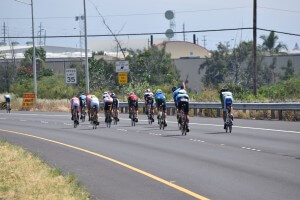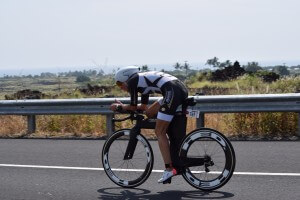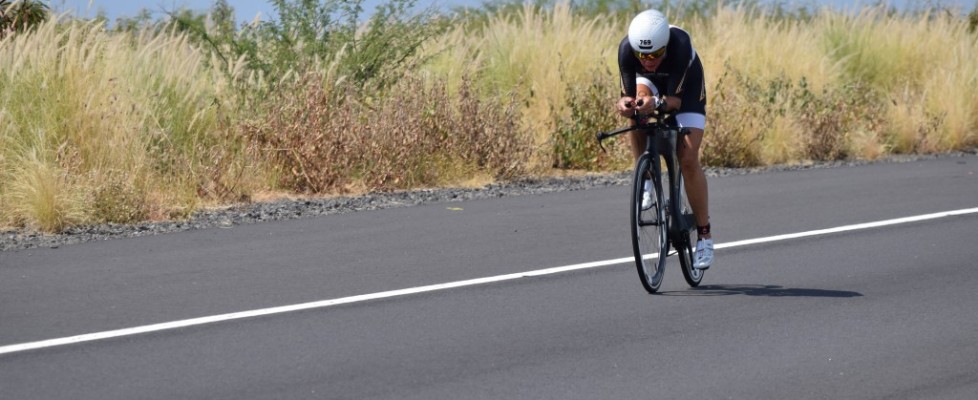Kona AG Women Bike Split Analysis: How fast do you need to be, and how did Lis do in 2015?
I have been spending some time analyzing Kona bike split data for the last 8 years. Coincidentally, this is when Lisbeth started racing Kona consistently (she also did it in 1996 pre-kids). I wanted to see what years were “tough” years, and how Lis has fared versus the fastest women bikers, fastest overall finishers, and masters women in general. I found the results pretty interesting both on a general basis and relative to Lisbeth’s performance over the years.
One reason I undertook this task was that Lis felt she had a bad race this year, finishing second in her AG. She definitely overheated during the last hour of the bike, and by the second half of the run was in pure survival mode. She ultimately lost 4% of her body weight by the time she hit Alii Drive. That is way too much. Her power on the bike seemed low, even considering heat-influenced drift affecting her early-model Quarq. I think many folks felt that the El Nino conditions were harsher than usual. But would the split data show this? I also wanted to get an idea if Lis’ new bike setup, a Ventum One and Nimblewear speedsuit, may have helped her bike split.
Note that I avoided bringing any pro data into this analysis, as the pro start times versus the age groupers have varied over the years. Since 2008 they have gone from a pure mass start, to pros first; to men pros then women pros then age groupers; to men pros, women pros, male age groupers and finally women age groupers this year. The 45 minute time spread can significantly affect racing conditions in Kona. A few minutes can make the difference between calm conditions and raging head winds, not to mention moderate vs boiling heat. Note that the women starting last this year, 15 minutes behind the AG men, may have had significant effects on bike splits thru reduced legal and not-so-legal drafting.

What years have been TOUGH bike years, and how fast do you need to be to make UBERBIKER status?
For this analysis I looked at the average bike split of the 10 fastest age group women bikers, and the 10 fastest age group women finishers. There was quite a bit of consistency in the splits from year to year, but it is clear that 2013 was an “easy” year, while 2015, 14, 09 and 08 were tougher.
Average Bike Split of 10 Fastest AG Women Bikers, and Fastest AG Woman Bike Split
2015: 5:19:53, 5:15:48
2014: 5:19:45, 5:13:24
2013: 5:03:05, 4:49:54
2012: 5:18:38, 5:00:42
2011: 5:11:22, 4:58:40
2010: 5:17:17, 5:07:00
2009: 5:21:38, 5:15:51
2008: 5:23:26, 5:15:33
Eight year average bike split, top ten AG woman bikers: 5:16:53 +- 06:37
Eight year average fastest AG woman bike split: 5:07:07 +- 09:48
So without getting into statistical arguments, I think it is safe to conclude a few things here. 2013 was definitely an outlier – super fast on the bike. 2015 and 2014 look a bit slower than average, as do the earlier years, but then there may be some technology drift there (as the UCI would call it) – faster bikes, electronic shifting, faster wheels, overall better bike fits in recent years versus 7 or 8 years ago. I think it is fair to say if you want to be in the top 10 AG woman bikers, you need to be able to ride around a 5:17 (21.2 mph average) in Kona’s rolling hot and windy conditions. If you want to be the fastest AG woman biker, plan on riding just over 5 hours (more like 21.75 mph average).
How do the Fastest Bikers Compare to the Fastest Finishers?
Next I looked at the top ten AG women FINISHERS, and averaged their bike splits. Obviously the fastest bikers are not necessarily the fastest finishers, sometimes the opposite. There is this marathon thing to deal with after all.
Average Bike Split of Top-ten AG Women Finishers: Bike Split, and Finishing Time
2015: 5:25:55, 10:08:02
2014: 5:22:05, 10:01:25
2013: 5:06:40, 9:39:20
2012: 5:19:34, 9:56:11
2011: 5:15:03, 9:45:01
2010: 5:21:12, 9:56:43
2009: 5:24:25, 10:07:37
2008: 5:32:03, 10:10:29
Eight year average bike split, top ten AG woman finishers: 5:20:52 +-7:35
Eight year average, top ten AG women finishers overall time: 9:58:36 +- 10:38
This data is consistent with the previous data in that 2013 was super fast, and 2015 was slow, especially when the run/swim is added in. Only 2008 is slower, but there is that technological creep to consider (no to mention overall greater participation and deeper fields now). And, we can see that the top ten finishers ride on average about 4 minutes slower than the top ten bikers – not much difference, about 0.25 mph. So, if you want to be a top overall finisher at least in the AG women in Kona, your bike split needs to be top notch. And you need to be capable of sub 10 hours overall in Kona conditions. Note that I only bothered to look at the finishing times for the top ten bikers in two years: 2015 and 2013. They were 12 and 7 minutes slower than the top-ten finishers. So it’s really no surprise that the finishing times of the top ten bikers are a bit slower than the top overall finishers. Maybe 10 minutes or so.
How did Lisbeth do in 2015?
Lisbeth’s bike split this year was 5:26:36. Not her fastest by any means. But I had some ideas that it may actually have been very fast, especially considering her “new” age group. She out-split the next woman in 50-54 by a healthy 20:53. Yes this was her first year in the AG giving her an age advantage, but 5 years prior in 2010 when she was the youngest in 45-49, she out-split the next woman in the AG by a mere 3 minutes. Her largest margin prior to this year was 2011 where she out-split the next woman in her AG by nearly 14 minutes. She had the 2nd fastest over-40 bike split this year (a 43 yr old went less than 2 minutes faster), and the 12th-fastest of all AG women. Her time was 6:43 slower than the average time of the top ten AG women bikers. This is actually the smallest margin since 2010, when she was only a couple minutes back (and 5 years younger, a year when she had her fastest ever Kona).

One other way I came up with to “normalize” Lisbeth’s bike data was to look at how the fastest over-50 AG woman biker’s bike split compared to the fastest overall AG woman cyclist’s bike split. The average margin from 2008-2014 was 29 minutes slower, +- 9 minutes. The smallest gap was 20:33 in 2009. Lisbeth however was only 10:48 behind the fastest AG woman biker in 2015. So she clearly had the strongest bike leg of any 50 plus woman in at least the last 8 years. Considering her power was down, likely due to a overly-high core temp during the last hour, and that her bike training was less than usual if anything (and is always quite slim compared to most athletes at her level – but this is by design since her training time is relatively limited and her coach Al Lyman does a great job of wringing the most from her training budget), I would say her Ventum One served her very well.


